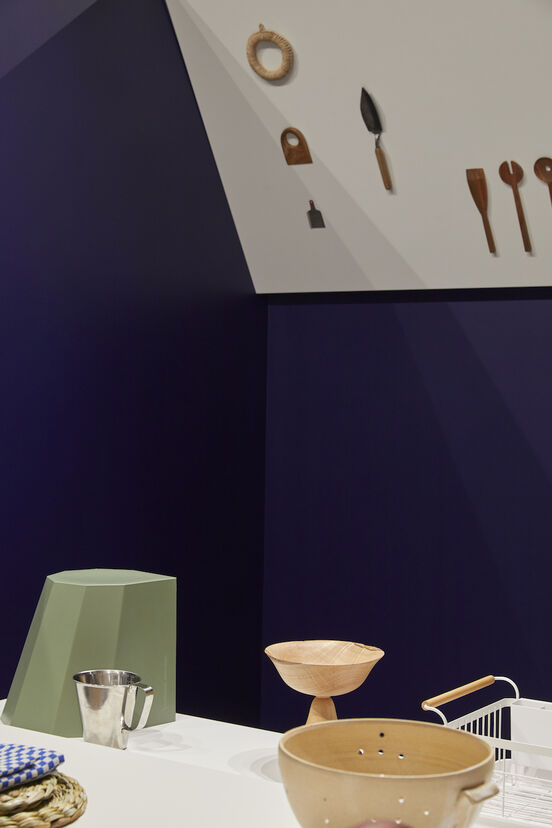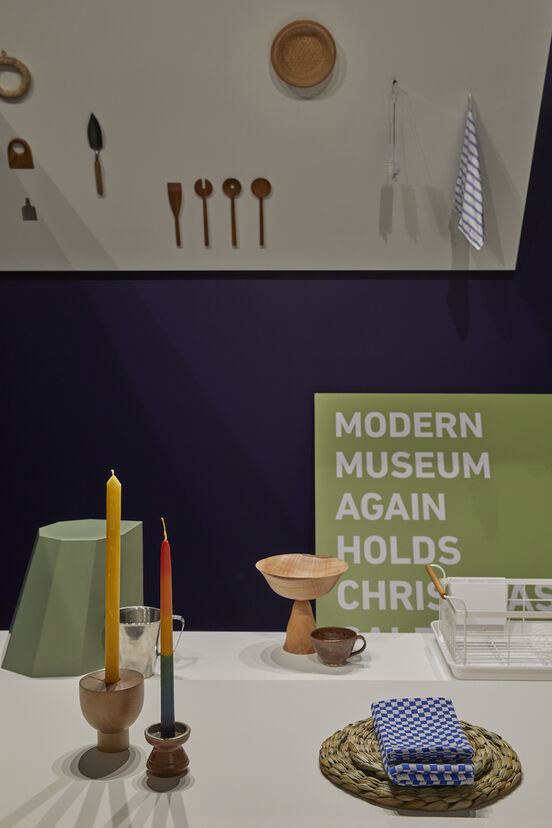-
Author
Ane Tonga -
Date
19 May 2019
Essay
The Room: Promise Me / Trust Me
Ani O’Neill, curated by Ane Tonga
‘It is in the living room shielded by sofa cushions and huddled behind a ranked army of bric-a-brac that the individual searches for a safe haven from the shock of modern urban life. It is in the phantasmagoria of the interior that objects appear deprived of their immediate usefulness and acquire new meanings and functions, as they are cast in a system of personal associations and elective affinities. What talismans shroud our dwelling places.’ – Massimiliano Gioni, The Keeper, 2016
Presenting an intermediary point between public and private, the domestic interior operates both as an inward-looking source of refuge and relief in an increasingly busy and complex world; and as a visual display of self-expression – a construction of how we imagine ourselves
being seen.
Within a home, a living room is a shared space, a gathering place for inhabitants and visitors alike. It is the setting for so much life: learning, negotiations, contemplation and relaxation. On a symbolic level, the living room perhaps more than any other domestic space is where cultural values and relationships are taught and maintained. It is this broader characteristic of a home that is addressed in the artistic practice of Ani O’Neill.
For more than 20 years, O’Neill’s practice has been at the interface of craft and art, community and gallery spaces the world over. Her artworks often reinterpret Cook Islands art forms which were passed down to her from her Rarotongan grandmother, Mama Pareu Ebera Nia, including tivaivai (quilt making), sewing and crochet – all infused with an urban sensibility. By drawing on these art forms, O’Neill challenges the value distinction between fine art and craft, the latter to which many indigenous art forms are relegated. In her playful way, O’Neill toys with this binary through scale, materiality, collaboration and site-specific installations that draw on aspects of domestic space.
Domestic spaces are reinterpreted in the site-specific installation Promise Me / Trust Me(1993), one of O’Neill’s seminal works and also a catalyst for her work with floristry ribbon. Promise Me / Trust Mewas first displayed as part of the Elam School of Fine Arts annual sculpture exhibition in 1993, which saw students and staff take over the myriad spaces of the former Central Auckland Telephone Exchange building on Wellesley Street, prior to its transfer to Auckland City Council from the Auckland Contemporary Arts Trust. Located within the building was a room embellished with floral wallpaper and dark carpet and shelving – interior decorating attempts by the phone company to domesticate the work environment and to temper its coldness. Within this space, O’Neill installed an array of her grandmother’s immaculately woven pare (hats) made from floristry ribbon, some still in their protective plastic wrapping. Pare come in a multitude of patterns, colours and styles; they are worn by women in church on Sundays, during special occasions, and are also made and given as gifts. However, pare displayed in this space took on new meaning: as a tribute to the large portion of female workers in the building who were of Pacific Island and Māori descent and who would have used the original Ladies’ Cloak Room there.1
Throughout the period of exhibition, a fragrance called Promise Meoften worn by O’Neill’s grandmother was sprayed in the room, adding another layer of memory to the immersive experience. And in line with Cook Islands cultural traditions of hospitality and generosity, O’Neill then broke down conventions of display that distance audiences by re-presenting the work as Trust Me. In this iteration, pare were taken out of their protective wrapping as O’Neill’s grandmother was confident that they would be safe.
For the first time since its display in 1993, Promise Me / Trust Mehas been reconstructed as part of The Roomat Objectspace. The installation’s reprisal is an auspicious moment – a homecoming of sorts – for O’Neill, who was born and raised in Ponsonby and Grey Lynn, and has been living between Rarotonga and her central base. This homecoming extends more widely to local Cook Islands and Pacific Islands communities. Auckland’s first Pacific community was not based in South Auckland but in the central Auckland suburbs of Grey Lynn, Ponsonby, Freemans Bay and Parnell.
2 But extensive gentrification over the last two decades has pushed many Pacific families out of this urban centre. Their presence is welcomed back via the shelving built along the walls where spaces have been dedicated to Mamas from the Newton PIC Church who would like to display their pare alongside the collection belonging to Mama Pareu and to her neighbour and friend, Mama Ko‘i Puia. Mamas proudly wearing their pare – along with other PIC Church members and other regional church groups who travelled to participate in the annual Uapou Church Fellowship – can also be seen and heard in raw footage playing within the space. What begins as a quiet rendition of ‘Imene Tuki’, a traditional Cook Islands hymn, slowly gains momentum in volume and movement before reaching a crescendo. Scenes vary as the camera pans the room – excitement is incited in waves; some children laugh, while others seem tired from the weekend festivities. The addition of this film to the installation allows for connections and reconnections with the loved ones depicted, including some of the beloved Mamas of Ponsonby who have since passed – such as Mama Tuki Karika, who made some of Mama Pareu’s hats, and Mama Puia. These intangible qualities are complemented by the Promise Mescent, made in and shipped directly from Rarotonga.
Promise Me / Trust Me encapsulates the artist’s ability to weave together the past and present with allusive and elegant detail. When sitting in this installation, a viewer is provided with cultural learning in many forms, all driven by O’Neill’s assertion:
Our craft skills are a physical means by which we can hold on to the threads of our ancestors. When we pass these threads on to others we celebrate the continuation of life and our connection to this living world.3
— Ane Tonga
1 William McAloon, ‘Kia ora Tolls Here: Elam Sculpture in the Telephone Exchange’, Art New Zealand, no. 70, 1994, pp. 46–48.
2 Indeed, the economic prosperity of the post-war epoch gave rise to the most prominent period of migration from the South Pacific Islands to Aotearoa, with families settling directly into urban centres. Ane Tonga, Urban Drift, Exhibition Catalogue, 2014.
3 Ani O’Neill, interview with Ane Tonga, March 2019.

Emma Ng, The Edit for The Room, 2019, Objectspace. Image: Samuel Hartnett.

Emma Ng, The Edit for The Room, 2019, Objectspace. Image: Samuel Hartnett.